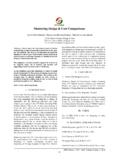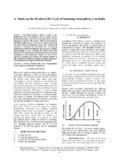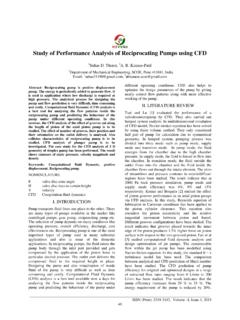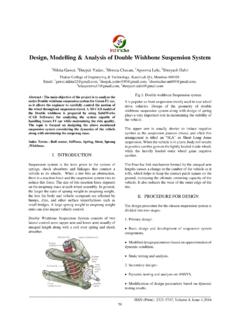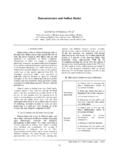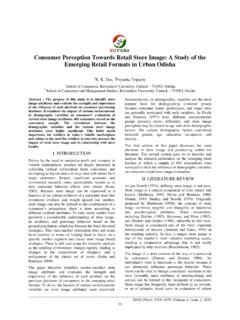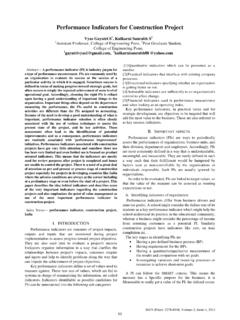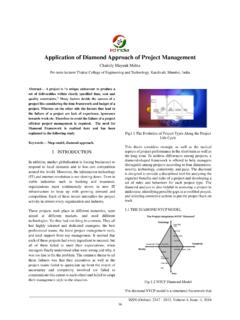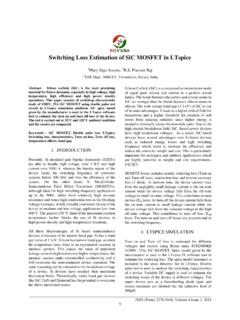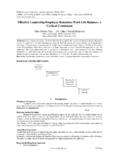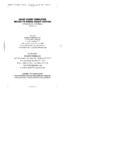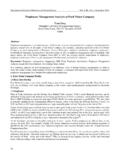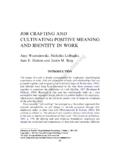Transcription of A Study on Employee Engagement Models for …
1 International Journal of Research and Development - A Management Review (IJRDMR) _____ _____ ISSN (Print): 2319 5479, Volume-4, Issue 4, 2015 79 A Study on Employee Engagement Models for Sustainability of Organisation 1 Bhagyasree Padhi, 2 Aruna Kumar Panda 1 Gandhi Engineering College, Bhubaneswar 2 International Society for Social Services (ISSS) Sahid Nagar, Bhubaneswar-7 (Odisha) Abstract ; Out of several resources available to the organizations, management of human resource, in general, and keeping the employees engaged in the work place, in particular, has become the most sensitive aspect that plays a crucial role in the success or failure of the business today. Dealing with Employee Engagement is nothing but handling successfully the complex feelings, emotions and psychological state of minds of the employees. While engaged employees have a positive attitude and self-commitment to deliver better outcomes for the success of the organization; an imbalance in the effort-reward or work-life would essentially generate higher stress among the employees that may result burnout and further staff-turnover in the organization.
2 In this Study , attempts have been made to discuss the meaning and significance of the Employee Engagement in the organization. Further, various Models related to Employee Engagement have been discussed and the factors that keep the employees motivated and engaged have been highlighted. The Study suggests that the management should be cautious enough to take care of the employees in the way that they should feel valued and involved in the work. The emotional and psychological availability and a cordial relationship of the employees with their co-workers and supervisors should be the essence of Employee Engagement . Key Words : Employee Engagement , Employee Engagement Models , Drivers of Employee Engagement , Rewards and recognitions, Community and social support, Fairness and justice, Sustainable workload, Supportive work community, Effort-reward imbalance, Work-life-work imbalance, stress, Job burnout.
3 I. INTRODUCTION Employees are the key component of every organization as they are critical to its viability and the competitiveness. Engaged employees are considered as most valuable asset for every organization (Kumar and Sia, 2012; Khan, 2013). High level of Employee Engagement in domestic and global firms promotes retention of talent, fosters customer loyalty, and improves organizational performance and stakeholder s value (Harter et al., 2002; Bates, 2004; Richman, 2006; Lockwood, 2007; Molinaro and Weiss, 2008; Markos and Sridevi, 2010). Engaged employees deliver better outcome with a positive attitude towards the organization and its values, which is important for its growth and development (Robinson et al., 2004; Saks, 2006). Thus communicating to the employees, making them feel valued and inculcating a strong corporate culture have been considered vital for the management of every organization (Kontakos, 2007; Holwerda, 2007; Sengupta and Ramadoss, 2010; Panda, 2011; Xu and Thomas, 2011; Shuck and Herd, 2012).
4 II. UNDERSTANDING Employee Engagement Employee Engagement was conceptualized during the Nineteen Century and became more prominent in the present era of turbo-globalism and hyper-competition, keeping in mind the productivity and prosperity of both the employees and the organizations, as a whole. In the World of research, several postulates were formulated in relation to Employee Engagement and definitions were derived from various perspectives. Kahn (1990) viewed Engagement to be the simultaneous employment and expression of a person s preferred self in task behaviours that promote connections to work and others, personal presence (physical, cognitive, and emotional), and active, full role performance. Further, Rothbard (2001) explained it as the psychological presence including attention, or cognitive availability of the Employee spending time in thinking about a role and his intensity of focus on the role.
5 It refers to a positive, fulfilling, work-related state of mind that is characterized by a personal involvement with enthusiasm, vigor, dedication, and absorption (Schaufeli et al., 2002; Harter et al., 2002). Essentially, it is a two-way relationship between the employer and the employees, where the employees are positively, emotionally and intellectually committed to their organization and its success, largely by providing discretionary effort on a sustainable basis (Tower-Perrin, 2003; Hewitt Associates, 2004; Robinson et al., 2004). On this context, Vaijayanthi et al., (2011) expressed Employee Engagement as a measurable degree of an Employee s positive or negative emotional attachment to his job, colleagues and organization which profoundly influences his willingness to learn and perform at work.
6 Further, Mercer (2007) expressed it as a state of mind in which employees feel a vested interest in the company s International Journal of Research and Development - A Management Review (IJRDMR) _____ _____ ISSN (Print): 2319 5479, Volume-4, Issue 4, 2015 80 success and are both willing and motivated to perform to levels that exceed the stated job requirements. It is the result of how employees feel about the work experience the organization, its leaders, the work and the work environment. They must feel positive emotions toward their work to be personally meaningful, consider their work-load to be manageable, and have hope about the future of their work (Nelson and Simmons, 2003). III. Employee Engagement Models While elaborating the concept of Employee Engagement , researchers like Khan (1990), Maslach et al. (2001), Robinson et al. (2004), Saks (2006) and Aon Hewitt (2011) formulated different Models that categorically discussed about the various dimensions of Employee Engagement .
7 Those essentially highlighted about the engaged employees, the environment and facilities that keep them motivated and dedicated to work for a mutual benefit while establishing a work-life balance in the day-to-day schedule. On this context, a detail investigation about these Models have been made here and the outcomes are hereunder- 1. Kahn s model Kahn s model (1990) of Employee Engagement is considered to be the oldest model of Employee Engagement . His model emphasizes that there are three psychological conditions that are associated with personal Engagement and disengagement of work: meaningfulness, availability and safety (Refer: ). For the purpose of his Study , Kahn interviewed summer camp counselors and organizational members of an architectural firm about their moments of Engagement and disengagement at work.
8 He found that, workers were more engaged at work situations that offered them more psychological meaningfulness and psychological safety, and when they were psychologically available. Figure - Kahn s model on Employee Engagement 2. Maslach, Schaufelli and Leiter model Another model of Engagement comes from the research work of Maslach, Schaufelli and Leiter on Job Burnout in the year 2001. According to them, six areas of work-life lead to burnout and Engagement : (I) work load (II) control (III) rewards and recognitions (IV) community and social support (V) perceived fairness, and (VI) values. In their model , they argued that job Engagement is associated with various characteristics like (i) sustainable workload (ii) feeling of choice and control (iii) appropriate recognition and reward (iv) a supportive work community (v) fairness and justice, and (vi) meaningful and valued work (Refer: ).
9 It came to light that like burnout, Engagement is expected to mediate the link between the six work-life factors and various works out-comes. Further, they argued that job characteristics, especially feedback and autonomy, have been constantly related to burnout. International Journal of Research and Development - A Management Review (IJRDMR) _____ _____ ISSN (Print): 2319 5479, Volume-4, Issue 4, 2015 81 Figure- Maslach, Schaufelli and Leiter model on Job Burnout 3. Robinson, Perryman and Hayday model The model developed by Robinson, Perryman and Hayday (2004) (here after Robinson et al., 2004) described Engagement as a two-way relationship between the employer and employees (Hewitt Associates, 2004). Their model was described in the research work entitled The drivers of Employee Engagement , where they suggested that Employee Engagement is a positive attitude held by the employees towards the organization and its values.
10 The model further identified that an engaged Employee is one who is aware of business context and works with colleagues to improve performance within the job to add value to the organization. The model emphasizes, the commitment of employees is possible when the organization continues to focus on developing and nurturing the employees (Refer: ) Fig: Robinson, Perryman and Hayday model on Employee Engagement 4. Saks model A conceptual model was developed by Saks in the year 2006 in the context of his research work on Antecedents and Consequences of Employee Engagement that focused on three basic aspects of Employee Engagement : (i) the employees and their psychological makeup and experience (ii) the ability of the employer to create a conducive environment that promotes Employee Engagement , and (iii) interaction between employees at all levels.
